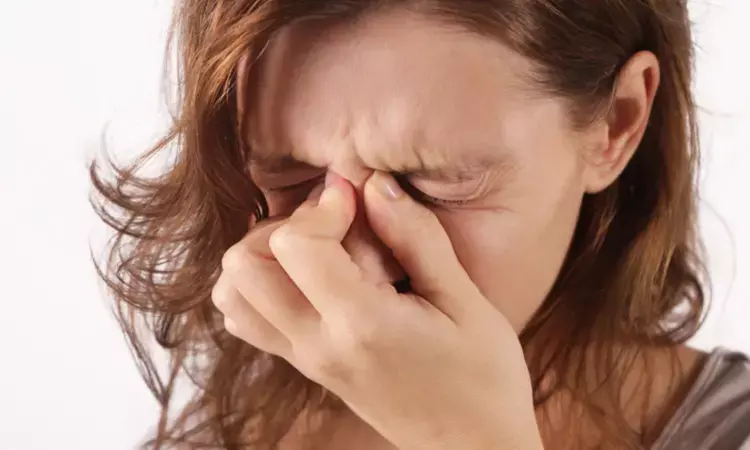- Home
- Medical news & Guidelines
- Anesthesiology
- Cardiology and CTVS
- Critical Care
- Dentistry
- Dermatology
- Diabetes and Endocrinology
- ENT
- Gastroenterology
- Medicine
- Nephrology
- Neurology
- Obstretics-Gynaecology
- Oncology
- Ophthalmology
- Orthopaedics
- Pediatrics-Neonatology
- Psychiatry
- Pulmonology
- Radiology
- Surgery
- Urology
- Laboratory Medicine
- Diet
- Nursing
- Paramedical
- Physiotherapy
- Health news
- Fact Check
- Bone Health Fact Check
- Brain Health Fact Check
- Cancer Related Fact Check
- Child Care Fact Check
- Dental and oral health fact check
- Diabetes and metabolic health fact check
- Diet and Nutrition Fact Check
- Eye and ENT Care Fact Check
- Fitness fact check
- Gut health fact check
- Heart health fact check
- Kidney health fact check
- Medical education fact check
- Men's health fact check
- Respiratory fact check
- Skin and hair care fact check
- Vaccine and Immunization fact check
- Women's health fact check
- AYUSH
- State News
- Andaman and Nicobar Islands
- Andhra Pradesh
- Arunachal Pradesh
- Assam
- Bihar
- Chandigarh
- Chattisgarh
- Dadra and Nagar Haveli
- Daman and Diu
- Delhi
- Goa
- Gujarat
- Haryana
- Himachal Pradesh
- Jammu & Kashmir
- Jharkhand
- Karnataka
- Kerala
- Ladakh
- Lakshadweep
- Madhya Pradesh
- Maharashtra
- Manipur
- Meghalaya
- Mizoram
- Nagaland
- Odisha
- Puducherry
- Punjab
- Rajasthan
- Sikkim
- Tamil Nadu
- Telangana
- Tripura
- Uttar Pradesh
- Uttrakhand
- West Bengal
- Medical Education
- Industry
Nasal mupirocin therapy post endoscopic sinus surgery does not reduce symptom recurrence: Study

A recent study published in the Iranian Journal of Otorhinolaryngology showed that nasal mupirocin therapy after endoscopic sinus surgery is not effective in reducing symptom recurrence in persistent rhinosinusitis with nasal polyps. In order to reduce the load of symptoms and future interventions for patients with chronic rhinosinusitis with nasal polyposis (CRSwNP), modern therapies often involve multi-modality therapy, which includes endoscopic sinus surgery (ESS) followed by ongoing appropriate medical therapy.
The pathophysiology of CRSwNP involves both immunologic processes and genetic predisposition. Asthma, allergy, and aspirin-exacerbated respiratory disease (AERD) appear to play a part in the development of CRSwNP. The most common medical treatments are intranasal and systemic corticosteroids, while functional endoscopic sinus surgery (FESS) is utilized for individuals who do not respond to conventional medications. Thus, Mohebbi and colleagues examined the potential benefits of a topical mupirocin ointment administered in the nasal vestibule for reducing the recurrence of symptoms and enhancing the efficacy of functional endoscopic sinus surgery.
A clinical trial comprised patients with nasal polyps, a positive nostril culture for Staphylococcus aureus, and chronic rhinosinusitis. Application of mupirocin ointment on the right nostril was designated as the intervention group, while application of vitamin A ointment to the left nostril was designated as the control group. At the time of diagnosis and 6 months later, Lund-Mackay radiological scores and Lund-Kennedy endoscopic scores were evaluated.
91% of the 60 patients with nasal polyps and chronic rhinosinusitis tested positive for Staphylococcus aureus in their nostrils. A substantial improvement following surgery was shown when the follow-up values in both groups were compared to the average of the diagnostic radiological and endoscopic scores (P-value=0.001, 0.001). The endoscopic and radiological score enhancements did not, however, differ significantly among the study as well as control groups (P-value > 0.56, 0.74).
Overall, after endoscopic nasal surgery, the use of mupirocin ointment twice a day in the nostrils of CRSwNP patients does not appear to have a substantial impact on the surgical result. Given the chance of gram negative pathogenic bacterial development, the administration of mupirocin in these individuals should be considered. It is advised that more research be done with a bigger sample size to examine the effectiveness of mupirocin and other topical antibiotics in preventing relapse in patients with CRSwNP.
Source:
Mohebbi, A., Mohsenian, M., Elahi, M., & Minaeian, S. (2024). Mupirocin Ointment Effect on Polyposis Recurrence After Sinus Surgery. Iranian Journal of Otorhinolaryngology, 36(5), 573-580. https://doi.org/10.22038/ijorl.2024.70685.3405
Neuroscience Masters graduate
Jacinthlyn Sylvia, a Neuroscience Master's graduate from Chennai has worked extensively in deciphering the neurobiology of cognition and motor control in aging. She also has spread-out exposure to Neurosurgery from her Bachelor’s. She is currently involved in active Neuro-Oncology research. She is an upcoming neuroscientist with a fiery passion for writing. Her news cover at Medical Dialogues feature recent discoveries and updates from the healthcare and biomedical research fields. She can be reached at editorial@medicaldialogues.in
Dr Kamal Kant Kohli-MBBS, DTCD- a chest specialist with more than 30 years of practice and a flair for writing clinical articles, Dr Kamal Kant Kohli joined Medical Dialogues as a Chief Editor of Medical News. Besides writing articles, as an editor, he proofreads and verifies all the medical content published on Medical Dialogues including those coming from journals, studies,medical conferences,guidelines etc. Email: drkohli@medicaldialogues.in. Contact no. 011-43720751


